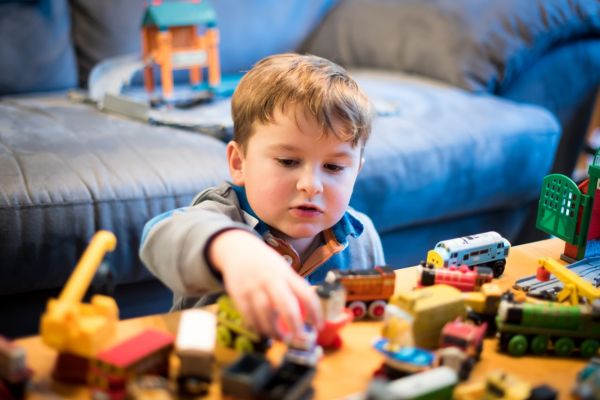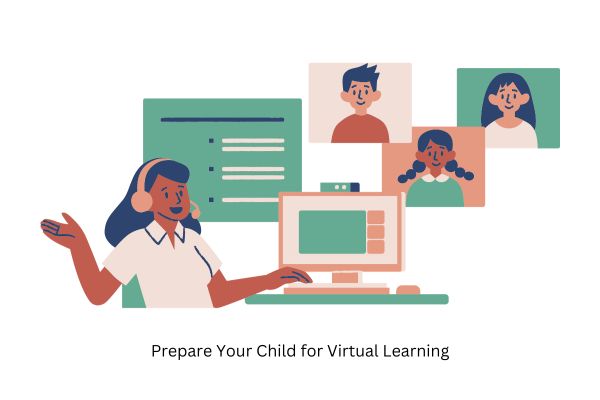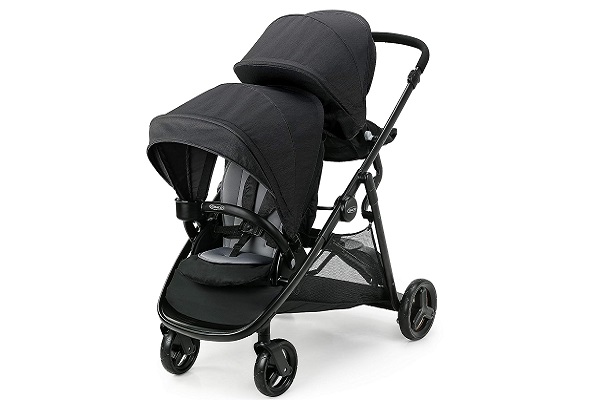Choosing the ideal educational toy for your child can be a difficult task. Educational toys are intended to improve a child’s learning and development by giving hands-on experiences that promote problem-solving ability, critical thinking, creativity, and a variety of other cognitive and physical talents. This guide attempts to give you useful advice on how to choose the finest educational toys for your child. You can ensure that your child has fun while learning and developing important skills by making the correct choices.
What are Educational Toys?

Educational toys are a type of plaything that is specifically meant to aid and encourage children’s cognitive, physical, and emotional development. These toys are designed to encourage a variety of skills and talents, making learning fun and interesting for children. Building blocks, puzzles, scientific kits, painting supplies, musical instruments, board games, and other types of educational toys are available. These toys are intended to be both entertaining and instructive, allowing children to learn through play. They are deliberately designed to present age-appropriate tasks that aid in the development of children’s problem-solving, creativity, language, and social abilities. For example, building blocks can help children develop spatial reasoning skills, while puzzles can improve problem-solving abilities. Science kits can teach children about the natural world and encourage curiosity, while art supplies can help them express themselves creatively. To summarize, educational toys are a fantastic approach to promote children’s learning and development while keeping them entertained.
Tips to Choose the Best Educational Toys for Kids
Consider Your Kids’ Interests and Age
When selecting educational toys for your child, one of the fundamental considerations is their age and interests. Age-appropriate toys are essential to ensure that the activity aligns with your child’s developmental stage. Toys that are too challenging can lead to frustration, while those that are too easy may not engage their curiosity.
- Age-Appropriate Selection: Different age groups have specific developmental milestones. For instance, infants benefit from toys that stimulate their senses and motor skills, such as soft, colorful rattles. Preschoolers thrive on toys that encourage imaginative play and cooperation, like building blocks or role-playing sets. As children grow, their interests and cognitive abilities evolve, so choose toys that align with their current stage of development.
- Interest-Based Choices: Understanding your child’s interests is equally important. A child who loves animals might enjoy educational toys that revolve around wildlife, while a budding scientist might be captivated by science kits or telescopes. Matching the toy to their interests can make the learning experience more enjoyable and meaningful.
Check for Educational Value
When searching for educational toys, it’s crucial to evaluate their educational value. Look for toys that actively engage your child’s mind and promote essential skills like critical thinking, problem-solving, and creativity.
- Critical Thinking and Problem-Solving: Toys that encourage critical thinking often involve puzzles, logic games, or activities that require your child to strategize and make decisions. These help develop their problem-solving skills and boost their cognitive abilities.
- Creative Exploration: Educational toys that foster creativity are designed to inspire imagination and originality. Art supplies, such as drawing kits or modeling clay, are excellent examples. These encourage your child to express themselves artistically and explore their creative potential.
- Subject-Specific Learning: Some educational toys are explicitly focused on particular subjects like math, science, or language. These can be valuable for reinforcing classroom learning in a fun and interactive manner. Look for toys that align with your child’s academic interests and areas that may need extra practice.
Consider Toys that Promote Physical Activity
Physical activity is a fundamental aspect of a child’s overall development. Choosing toys that encourage movement and exercise can have a positive impact on their motor skills, physical fitness, and well-being.
- Outdoor Play Equipment: Playground equipment, such as swings, slides, and climbing structures, offers opportunities for children to engage in physical activities while having fun. These toys promote coordination, balance, and social interaction.
- Sports Gear: If your child shows an interest in sports, consider providing them with the necessary gear for activities like soccer, basketball, or tennis. Playing sports can enhance physical fitness, teamwork, and sportsmanship.
- Active Video Games: Some video games are designed to get kids moving, incorporating physical activity into the gaming experience. Look for games that require dancing, jumping, or other physical movements to keep your child active.
Look for Open-Ended Toys
Open-ended toys are those that encourage creativity and imagination, as they can be used in various ways and adapted to different play scenarios. These toys are often among the most versatile and valuable in a child’s collection.
- Examples of Open-Ended Toys: Building blocks, LEGO sets, art supplies, and dress-up clothes are prime examples of open-ended toys. They empower children to explore, experiment, and create without strict rules or predefined outcomes.
- Freedom to Explore: Open-ended toys provide children with the freedom to invent their own games, stories, and worlds. They promote problem-solving and critical thinking skills by allowing kids to adapt and modify the play experience according to their imagination.
- Multi-Age Applicability: Open-ended toys often span a wide range of age groups, making them a smart investment as they can adapt to your child’s developmental stages over time.
Ask How and Why Questions: Fostering Curiosity and Critical Thinking
Engaging your child in discussions about their toys can significantly contribute to their learning process. Encourage them to ask questions and explore the “how” and “why” behind their playthings. Here’s how you can delve deeper into this concept:
- Promote Exploration: Encourage your child to examine their toys closely, manipulate them, and figure out how they function. Whether it’s a mechanical toy, a puzzle, or an art set, ask them to explore the various elements that make it work.
- Encourage Hypothesizing: When your child is pondering the “why” and “how” of their toys, ask them to make hypotheses. For example, if they’re playing with a building set, you can ask, “Why do you think these blocks stack together without falling?”
- Experimentation: Support hands-on experimentation by letting your child test their theories. If they believe that a toy car goes faster on a smooth surface, set up a mini racetrack with different textures to test their hypothesis. Encourage them to document their findings.
- Critical Thinking: These discussions foster critical thinking by promoting problem-solving and reasoning skills. By asking these questions, you help your child develop a structured approach to analyzing and understanding the world around them.
Don’t Forget to Have Fun: Balancing Education and Enjoyment
While the educational aspect of toys is essential, it’s equally important to ensure that playtime remains enjoyable. Here’s how you can strike the right balance:
- Child’s Interests: Pay close attention to your child’s interests and preferences. Select toys that align with their passions and hobbies. When a child is genuinely interested in a toy, they are more likely to have fun while learning.
- Play Together: Spend quality time playing with your child. Engage in the activities and games they enjoy. Your participation not only enhances their enjoyment but also strengthens the parent-child bond.
- Variety: Introduce a variety of educational toys, offering a diverse range of experiences. It prevents monotony and keeps the learning process exciting.
- Celebrate Achievements: Acknowledge your child’s accomplishments during play. Whether it’s completing a challenging puzzle or building an elaborate structure, celebrate their successes to boost their self-esteem and make learning fun.
- Incorporate Playfulness: Let your child’s imagination run wild. Encourage them to invent stories, create scenarios, and make their own rules when playing. This creative freedom can turn any educational toy into a source of fun.
Encourage Collaborative Play: Nurturing Social Skills
Some educational toys are designed for group play, and they play a crucial role in fostering your child’s social and interpersonal skills. Here’s how collaborative play can be encouraged:
- Playdates: Organize playdates or invite friends over for group play sessions. It allows your child to interact with peers and practice essential social skills like sharing, communication, and cooperation.
- Teamwork: Choose toys that require teamwork, such as board games or cooperative building sets. These activities promote collaboration, problem-solving, and strategic thinking.
- Conflict Resolution: Occasionally, disputes may arise during collaborative play. Use these moments as teaching opportunities to guide your child in resolving conflicts and communicating effectively.
- Role-Playing: Encourage role-playing scenarios, where your child and their friends take on different roles and responsibilities. It helps them understand different perspectives and work together harmoniously.
- Communication Skills: Group play can enhance verbal and non-verbal communication skills, allowing children to express themselves, listen actively, and interpret social cues.
Look for Toys Made with Durable Materials: Ensuring Longevity
Children can be quite energetic and exuberant during play, which is why it’s crucial to choose toys made from durable materials that can withstand the test of time. Consider the following:
- Quality Construction: Prioritize toys that are known for their high-quality construction. Look for reputable brands and read reviews to ensure the durability of the toy.
- Material Considerations: Check the materials used in the toy’s construction. Ensure they are safe and robust, capable of enduring the wear and tear of active play.
- Age-Appropriateness: Select toys that are suitable for your child’s age and developmental stage. Toys designed for younger children should be built with safety and durability in mind.
- Storage and Maintenance: Teach your child how to care for their toys. Proper storage and maintenance can significantly extend the lifespan of educational playthings.
- Warranty: Some reputable manufacturers offer warranties on their toys. While this may not apply to all toys, it’s a good indicator of the manufacturer’s confidence in their product’s durability.
Don’t Forget About Safety: Prioritizing Your Child’s Well-being
Safety is paramount when selecting educational toys for your child. Ensure that the toys you choose are safe and age-appropriate. Here’s how to do so:
- Age Recommendations: Always check for age recommendations on the toy’s packaging. These guidelines help you select toys that match your child’s developmental stage.
- Choking Hazards: Inspect the toy for small parts that could be a choking hazard, especially if you have younger children in the house. Be cautious of detachable components that may come loose.
- Toxic Materials: Ensure that the toy is made from non-toxic materials. Check for any potential allergens or harmful chemicals in the toy’s composition.
- Compliance with Standards: Look for safety certifications and standards compliance labels on the packaging. These labels indicate that the toy has undergone rigorous safety testing.
- Regular Inspections: Periodically inspect your child’s toys for wear and tear. Discard or repair any damaged toys to prevent potential safety hazards.
- Supervision: Always supervise your child during playtime, especially with new or unfamiliar toys, to ensure their safety.
Why is Toy Selection Important?
Choosing the right educational toys for your child is crucial for several reasons:
- Cognitive Development: Educational toys stimulate various cognitive skills, including problem-solving, critical thinking, and creativity. These skills are essential for a child’s overall development and future success.
- Early Learning: Educational toys can introduce children to important concepts like math, science, and language in a fun and engaging manner, providing a strong foundation for future learning.
- Skill Enhancement: Toys that promote physical activity enhance motor skills, while open-ended and imaginative play boosts creativity and imagination.
- Enjoyable Learning: The right educational toys can turn learning into a pleasurable and exciting experience, setting the stage for a lifelong love of learning.
Conclusion
Choosing the most effective educational toys for your child’s growth might be difficult but you can make an informed decision by considering their age, hobbies, and the educational value of the toy. Toys that encourage physical exercise and spark creativity and imagination should be chosen. The appropriate educational toys may transform playtime into a meaningful and fun learning experience, putting your child on the path to a successful future.






